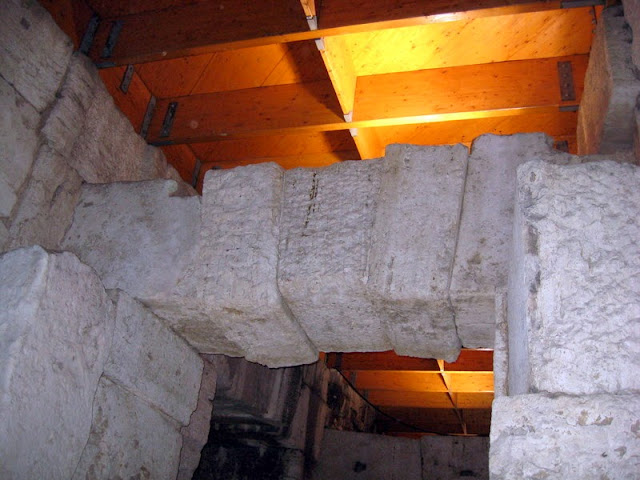Saturday, April 30, 2011
Rome on $85 a Day – The Colosseum
This lush passageway belies the brutality that occurred in the Colosseum arena beyond where gladiators fought for their lives. Many of the gladiators were slaves who were trying to earn their freedom. If a slave survived for three to five years, depending on his contract, he earned his freedom and had a guaranteed job thereafter training gladiator recruits.
David and I were privileged to be one of the first to see this staging area where the gladiators waited to be called to the arena, and the animals were housed that did battle with unlucky convicts. Our guide told us that the ancient Romans were quite efficient in the way they dealt with criminals as there were neither debates over the death penalty nor huge sums of money expended feeding and housing prisoners. In ancient Rome, if a prisoner was convicted, he quickly faced his destiny with a lion in the arena. I suppose this provided entertainment for the crowds, an efficient dispatch of justice, and a meal for the lion--an efficeint, if brutal, system.
Our guide pointed out a canal where water from the Tiber River entered the arena,. Here, if the stage were flooded, marine battles could be enacted.
The keystone arches, as well, of course, as the rest of the structure, were a masterpiece of engineering. The entire structure was completed in eight years, but the gouging of the walls to extract iron ore severely weakened the structure.; Today it looks pockmarked, and, part of that weakened area did indeed collapse when an earthquake shook the walls.
The Underground area of the Colosseum and the third tier of seating in the arena have only been opened to the public this year, so this tour is truly a treat. Not only did we walk the paths that the gladiators trod thousands of years ago, but we were also admitted to the very highest tier of seats with amazing views of the city. From this vantage point, we could see the Forum, Constantine Arch, and the Palatine Hill.
The Palatine Hill was the most important one of the seven hills of Rome. According to Roman mythology, Romulus and Remus were born in a cave on the hill and raised by a she-wolf until adopted by peasants. The twins rose to power by killing the opposition, even battling each other for leadership. Victorious Romulus gave his name to this Eternal City, and Palatine is etymologically related to the word “palace.”
Practicalities -
You can bypass the two-hour lines completely if you order your tickets in advance from Tickitaly.com. We paid 55 euros, $78, for two. By the way, a tour (about 1 1/2 hours) is the only way to see the underground and third tier as these areas are quite securely locked and only the guide has a key.
Subscribe to:
Post Comments (Atom)





No comments:
Post a Comment